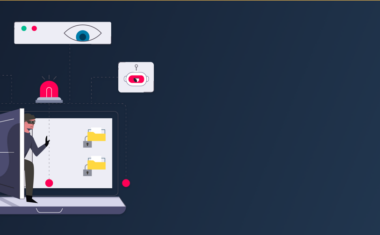Free UX Design Course
Dive into UX design with our free starter course. Transform your creative ideas into user-friendly solutions.
In the face of a rapidly shifting marketplace and workflow, the need for effective design-based solutions that are reliable, user-friendly, and stand out in a crowd, is more immediate than ever. As a result, the demand for creative, skilled, innovative designers is incredibly high. According to the U.S. Bureau of Labor Statistics, the year-to-year growth through 2028 for UX designers will be higher than 3% annually, placing it amongst the top 50 growing career tracks across the globe.
At a time when an increasing amount of routine operations are being taken on by teams working remotely for the first time, and as society continues to rely more and more by the day on exclusively digital experiences, there will continue to be an increase in UX designer jobs that need to be filled. Businesses need talented, well-trained professionals—with multi-faceted abilities—who understand the new obstacles of user interactions within this changing landscape.
The demand for high-quality design work that can be applied across multiple platforms— ranging anywhere from customer mobile experience curation to website design, to enterprise systems, and more. Designers are expected to reach the same quality standards as they have in the past and tackle user needs, while also being on the crest of what is new and breaking in experience design. If you are new to the field of design, you are in an exciting position. The market is hungry for designers with expertise and talent who can meet their new and always-changing needs. Just the same there are also many other designers out there just like you competing for those competitive positions.
So, to counter that competition, how might you improve your odds when you’re going after one of those opportunities? Perhaps you have landed that first position but are looking for a way to progress past your current role. Unfortunately, there is no foolproof method. However, there are things you can do to get noticed—to stand out amongst the crowd.
1. Do Proper Research/ Do Thorough Research While Applying
And a lot of it. Research until the cows come home. Research your research. There is no such thing as being too prepared or collecting too much data. This is true of your designs, it applies to how you should approach the audits of your designs, and it also applies to the preparation required to score a desirable position at a very competitive company.
You should invest time in researching the company you are trying to join. Move beyond the standard requirements of most entry-level designer positions and the core guiding values displayed on the company site. Some good questions to ask yourself:
- How can you position yourself to add tangible value to the company’s mission?
- Who are their customers?
- What competitors are they ahead of?
- Who are they behind?
If you have a firm idea of how your particular design acumen is going to be beneficial to a specific type of commercial mission, you have a better chance of attacking new roles and responsibilities with confidence and enthusiasm.
When you have found a good position for you, and you are making your initial decisions about how to execute your research—plan properly. The more detail you bake into your planning process, the more you can learn about your given product’s users, their behavior, their goals and motivations— and most of all their needs. One of the most common pitfalls for amateur designers is excluding end-users from the user experience design process. You may be tempted to think you can test any app or website yourself, but that will not replace the act of speaking with users. Likewise, there is no replacement for properly conducted UX design research, and consistently improving your research strategies will not go unnoticed by your managers.

2.Turn Your Design Portfolio Into a Presence
And don’t be afraid to promote yourself. This part is about moving beyond just the fundamentals of having a great portfolio. Everybody knows how to create wireframes. Everybody wants to use their new design skills to “change the world.” It is important to find out how you are different and make that work to your advantage.
Certainly, use your portfolio to present your technical ability and examples of successful applications that used your work, but think of it more as a living document than a requirement to do business. Hiring managers and senior designers look for candidates whose work speaks for itself. If you can expand on your portfolio in creative ways, it can become more than a collection of past projects.
One thing that many designers foolishly overlook is the value of having a social media presence. Sharing existing work with a fanbase of friends, colleagues, or strangers who already know what you do is often the lowest load/high yield activity to help boost a professional profile and promote new work. Online, you can easily have followers around the world who have never met you before resharing your work to bring in more attention. But this is only one part of managing your work presence.
Get To Know Other Design Students
Rachel Millman
Product Designer at Bonterra
Sharon Yeun Kim
UX Design Intern at Colgate-Palmolive
Micole Simpson
UX Designer at Skipify
3. Practice Your Moves/ Build a Planned Strategy To Upscale
Build a strategy that moves from the granular to the big picture. After you have collected a list of skills from past experiences, practice talking to other people about them. Ask your friends to listen to you talk about your feelings about your work. This exercise may initially feel awkward, but the more you speak on your work the more you will find what excites you about design. Foundational acumen and a positive general mission statement are building blocks, but UX roles go way beyond knowledge of design, technical methodologies, or wanting to be an industry disruptor. Genuine interest and passion go a long way in a room or on a Zoom.
Are you specifically super interested in usability testing and prototypes? Maybe you are more heavily involved with the visual elements of the product and are most fascinated by exploring your UI-centric skills. A useful strategy is to spend some time thinking about what elements of design you are passionate about. You can then apply the knowledge you gain from those observations to side projects that help build community and develop the field of design in indirect ways.
4. Show up/ Be Proactive and Network
When you go into your interviews, ask questions. Be present. When you are hired by a company and assigned to a design team, get involved with your new teammates, and bring value to the table. Plus, speaking up and finding other like-minded designers will help you fall into bigger and more versatile networks.
During your first few years in the industry, you are going to be invited to all sorts of networking events and conferences. If you’ve invested time in feedback and critique on Dribbble or similar portfolio sites or tried to network from behind the screen on LinkedIn, you may have found that though it may be awkward and less than intuitive—face-to-face networking is key in broadening your horizons and bringing you into the right peoples’ orbit.

In addition to picking up new skills and valuable takeaways that improve the quality of your work, you’ll meet fellow newbies who are facing the same “starting” challenges that you are. Frequently the start to being taken seriously by your betters is to focus on improving collaboration with your peers.
5. Embrace Dissatisfaction
If you are constantly exploring new strategies, and learning new proficiencies, you’ve planned your goals, and you have the technical/personal know-how to broach your first career role as a UX designer—the most important step of all can be how to organize your mindset. The reality is that excellence is not a flash in the pan but the reliability to connect with your target on a routine basis.
Let your perfectionism go to work for you. Embrace this litigiousness when you are on your dozenth iteration of a test or mocking up your tenth graphic for a scrutinizing client. Proper UX design requires reiteration. A perfect design cannot be achieved in a single attempt, and neither can a career path. Allow your discontent and dissatisfaction with less-than-stellar work to push you to look for solutions that are going to blow your stakeholders away, and genuinely create new spaces for users.
In time, refusing to settle for less than perfect from your designs will propel you to not settle for less in your approach to each part of your professional design career.
Since you’re here…
Interested in a career in UX design? Rise to the top of the CV pile when you enroll in our UX Bootcamp—you’ll get a UX job or your tuition money back. Take a look at our student reviews and test out our free UX course to get a feel for our style and results. TL;DR: average starting salaries for our students = $85,440. Let’s do this.






